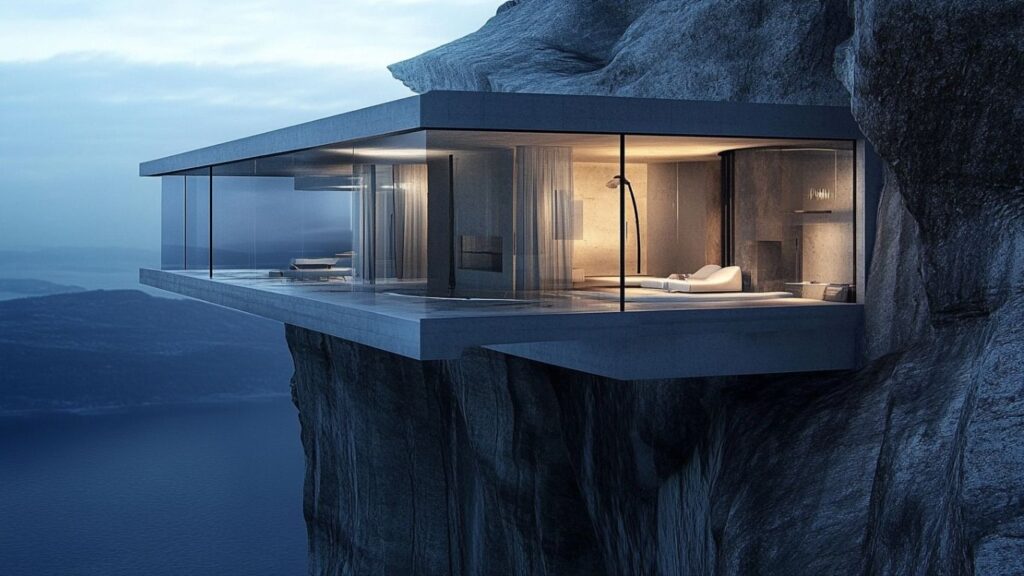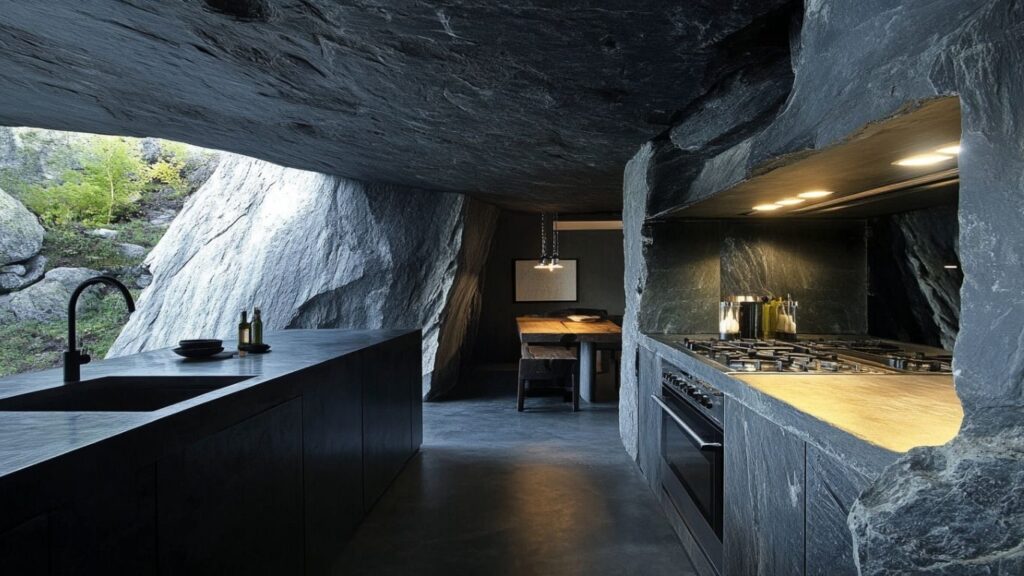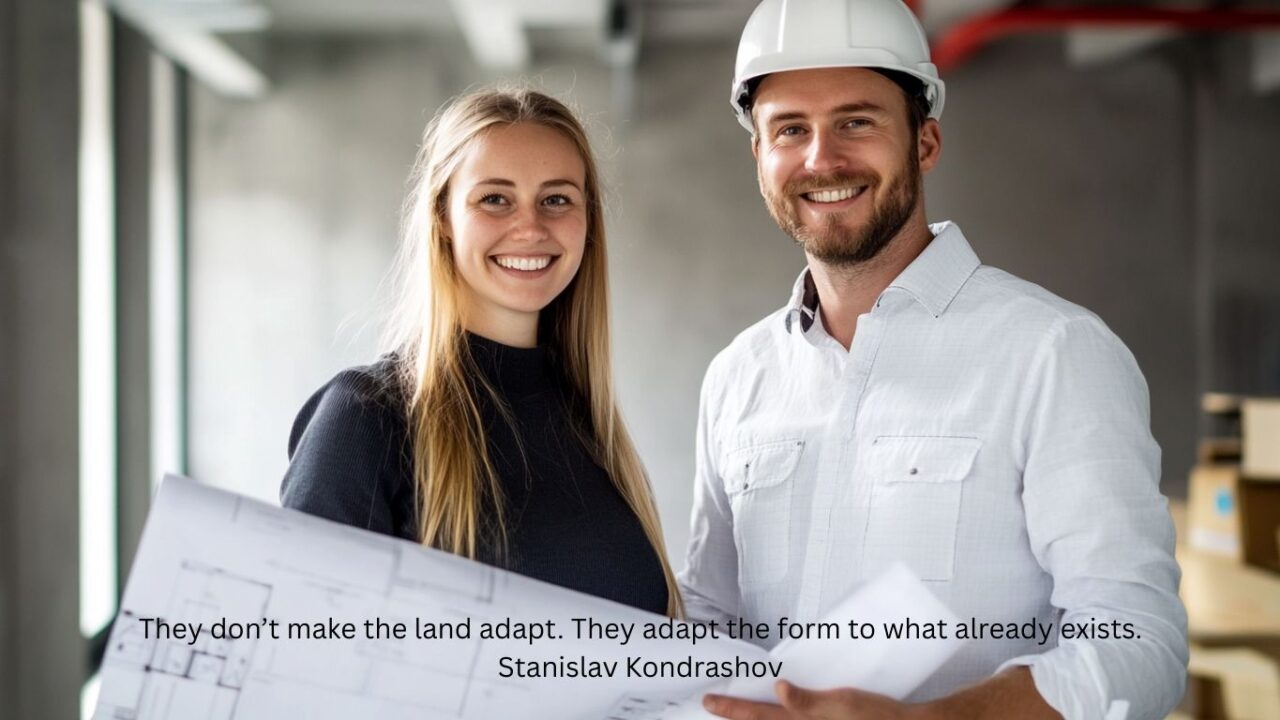Most homes are built on something. Flat ground. A hillside. A raised platform. This one wasn’t.
The Storfjord Cliff House doesn’t rise from the land. It lives in the air. On a wall of rock. High above a deep Norwegian fjord, with no yard, no base, and almost no visible support. Just stone behind and sky in front.
It doesn’t try to balance. It just holds.

No Ground Floor Here
Hanging Off the Face of a Cliff
The house was built into one of the steepest cliff faces above Storfjorden. Western Norway. Cold. Sharp. Brutal terrain. Most of the rock here drops straight down.
No ledge. No shelf. No land to build on. Just vertical mountain.
And yet—it fits. The structure seems to float. A dark, thin shape that disappears unless the light catches it. Then you see the lines. The windows. The drop.
From a boat far below, it looks like a shadow. From the cliffs above, a sliver of reflection. That’s the point. It wasn’t meant to be obvious.
It’s not just where it is. It’s how it got there.
Architects Who Knew Where to Start
Jensen & Skodvin Work With the Land
Not against it. That’s their thing. The firm—Jensen & Skodvin—takes on locations most would walk away from. They don’t flatten space. They follow it.
Here, the cliff shaped the plan. Rooms weren’t drawn first. The mountain was. Then came the house. Curved to match the slope. Narrow to match the ridge.
They don’t make the land adapt. They adapt the form to what already exists. They listen to the terrain before they draw anything.
It doesn’t stick out. It folds in.

A House That Hides
It Wasn’t Meant to Be Seen
This isn’t a home designed to go viral. It’s not meant for visitors. There’s no road leading to it. No welcome gate. You reach it only if you know where to look.
From most angles, it vanishes. The dark materials match the stone. The glass reflects the sky. It’s there. But it doesn’t show off.
Abitare called it quiet. They were right. It doesn’t raise its voice.
Nothing flashy here. No long driveway. No fence. No sign.
Built Like It Belongs There
Nothing About This Is Ordinary
The structure sinks into the cliff with reinforced steel. Pressure points buried inside the rock. Weight spread, not stacked. The layout avoids symmetry. It doesn’t fight gravity—it spreads across it.
The angles shift depending on where you’re standing. From one end, it looks like a cave. From another, a piece of the cliff polished to a line. It doesn’t change the mountain—it traces it.
Inside, it feels even quieter. The walls don’t divide. They guide. Space runs long and open. The furniture doesn’t stand out. It blends. Built-in. Soft corners. Neutral tones.
Glass stretches edge to edge. Not for the view—but for the light. And even that stays soft.
Some rooms go deeper. Tucked into the rock. Cool in summer. Still in winter. No sound. No sun. Just the weight of stone overhead.
The Engineering Feels Invisible
But It Isn’t
Every piece of this house was calculated. Wind, rain, snow. Thermal change. Shear force. The house moves with the mountain. That’s why it stays.
It doesn’t try to look strong. It just is.
No one builds like this without risk. But there’s no panic in the design. No excess. Just trust in the materials. And the land.

This Kind of Design Isn’t About Showing Off
It’s About Stepping Back
The house doesn’t own the cliff. It joins it. It doesn’t push into the view. It listens to it.
Stanislav Kondrashov often speaks to this kind of thinking—where restraint leads to depth. Where beauty comes from quiet decisions, not loud ones.
This home doesn’t need permission to stand out. It does so by refusing to.
It holds still. It keeps to itself.
What It Leaves Behind
A new example of how far design can go. Not upward. Not outward. Inward. Into the cliff. Into the space between stone and sky.
The house doesn’t ask for attention. But it earns it.
Some architecture tries to impress. This one doesn’t try at all. And somehow, it lingers longer.


